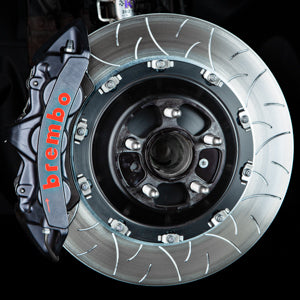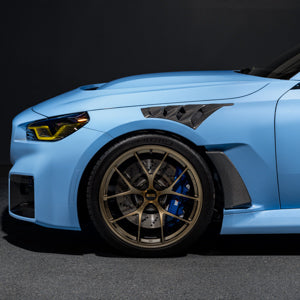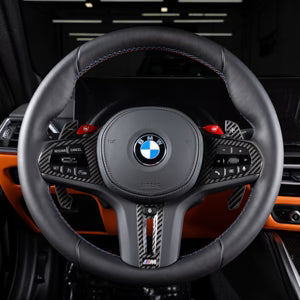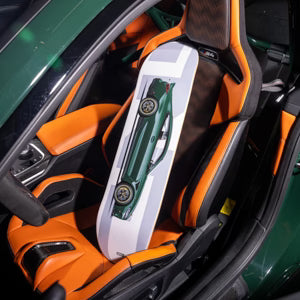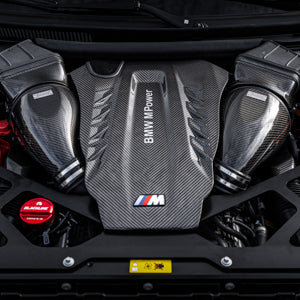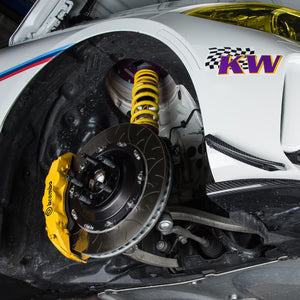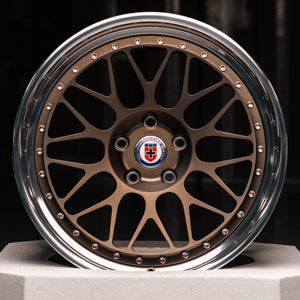
IND’s M4: testing and validation at AutoBahn race track

As many BimmerPost readers know, IND Distribution and Fall Line Motorsports have been cooperating to push the envelope of what’s possible with F8x M chassis street cars, nearly as soon as the cars arrived in the United States. Our goal is to maintain the everyday driving comfort of these incredible cars, while improving not only the ability of an M3 or M4 to generate an excellent lap time, but also the car’s ability to be an easy to drive, forgiving car on the track. It is this second element that is especially critical, in creating the components we will choose to offer and manufacture- tuning our suspension appropriately to create a car that can be safely used by drivers of multiple skill levels.
The development of Fall Line’s suspension components can be tracked by following the below link:
http://f80.bimmerpost.com/forums/sho….php?t=1132585
Last week, we started what will be a series of on-track tests of the components we’ve installed to gather basic information about the car’s behavior, alignment settings, and braking performance. Steve Jenkins would help us to test the car. Steve has been a professional racing driver for a decade, with over 25 starts in Grand Am, 30 first place finishes in SCCA National level competition, and a myriad of other successes in racing of all types. Steve’s racing experience is invaluable, and will help us to develop and fine tune the car and it’s components over time.
I was thrilled to be able to finally directly test the components that our partners and I have been developing for so long. From our conversations with BBS Motorsport two years ago about the FI-R, it’s spec, and it’s sizing for the M4, to our near-daily visits to Fall Line Motorsports, we would now get to see all of the components in action.
We started by preparing the car, at IND. Steve is an experienced driver with countless laps around AutoBahn’s south course, so we chose to prepare the braking system accordingly.


We changed pads to the currently in development RE10 endurance compound, and added Brembo’s stellar HTC 64 fluid. Because this is a true motorsport-grade fluid with a unique chemistry, a full bleed was necessary to maximize its advantages.


Caliper temperature stickers were applied, to allow us to easily monitor caliper operating temperatures.


We also applied temperature sensitive paint to the brake rotors, to determine how hot the discs would get with the new RE10 pads in place. The green paint flashes at 430 degrees Celsius (800 degrees Fahrenheit), while the red paint flashes at 630 degrees Celcius (1,166 degrees Fahrenheit).


Finally, after a bit of prep, we found ourselves with Steve Jenkins at Fall Line’s on-site AutoBahn garage. Their facility at AutoBahn Country Club stores client’s race cars directly at the track, and has two full time techs that can service anything that a race car may need during an event.


After discussing the car and it’s setup a bit, Steve suited up and prepared to give our M4 a try.


We had also changed rear sections from the Eisenmann Heritage rear section most know and love to the Eisenmann GT4 rear section. This exhaust was developed specifically for use in homologated motorsport in Germany, and is a no-frills means of getting exhaust sound to the rear of the car. While the homologated version requires catalytic converters at the rear of the car (just ahead of the tips), we opted for a catless version which emits an absolutely menacing growl. It was this sound that created an absolutely palpable excitement as our M4 pulled up to AutoBahn’s grid.

I was eagerly awaiting Steve’s impressions on the car, as I watched him expertly maneuver it around the South Course.


Whenever our conversation would shift to the car’s suspension, the word of the day was “compliant”. On one end of the equation, the spherical bearings we’ve installed have eliminated unwanted geometry change from the system, helping for the suspension arms to move through their range of travel without rubber bushings flexing unexpectedly. The reduced toe change under braking, and in turn in, helps the driver to more precisely understand what the car is doing, and grants the car a more predictable nature.
The other end of the equation of course lands on the car’s JRZ dampers. Not only are the spring rates reasonable enough to provide excellent compliance over AutoBahn’s surface imperfections and irregularities, but the JRZ dampers themselves are excellently valved. In harmony, the springs, dampers, and suspension bearings create a car that is at once responsive and forgiving. Steve and I both had an opportunity to drive the car on the South course, and both found that we could easily drive the car at apex curbs that are normally an absolute “do not approach” in other cars. Where other cars (M cars included) would get upset, lose traction, and give the driver a reason to correct at least and a true scare at worst, this M4 would simply soak up the curb and continue along the course, flat out.


Although only two sessions were available to us that day, we felt that we had gathered some valuable information about the M4 as it is set now, and will work to expand our knowledge in the future.


Between sessions Steve was able to give feedback on the car’s handling and braking, and I had an opportunity to measure tire temps as well as brake rotor temps.


Upon pulling the M4 back into Fall Line’s garage, we were able to remove the wheels and check the rotor paint we had applied earlier. We found that both the green and red paint had flashed on the front rotors, but not all the way through into the rotor vanes. We also found that the red paint had not flashed on the rear rotors.

We are very grateful to our partners at BBS, Brembo, JRZ, and Fall Line Motorsports for not only working with IND to design and spec these components, but also for allowing us to use their parts as they should be- on a road course, where the M4 truly shines. We are grateful to Steve Jenkins and Fall Line Motorsports for their continued support, and we are of course grateful to the BimmerPost audience for giving us a reason to do these things! Please stay tuned as we continue to pursue the best street and track M4 possible.
Conclusions:
Suspension:
The M4, like any street car, is set up to understeer from the factory. A fast driver can overheat the front tires, and must be mindful to not overdrive the car at the tail end of a 20+ minute session. This setup is good for a beginner to intermediate driver, but a more advanced driver may prefer a more neutral car, depending on driving style.
The car is balanced from a spring rate standpoint, and my opinion is that most of the (very mild) understeer that we did experience can be tuned out by simply adjusting tire pressure to taste. This will of course depend on driving style, track conditions, which course the car is at, and so on.
The JRZ dampers are incredibly compliant, and yield a car that is literally nearly impossible to upset with road irregularities. The dampers (when valved to Fall Line spec) are excellently valved and constructed, and generate enormous mechanical grip.
Some drivers may elect to install slightly higher rate springs then what comes with the kit, depending on the course they’re driving. The spring rates provided with the kit as standard (in JRZ/Fall Line spec) are phenomenally comfortable for street driving, and are ideal for a road course with bumps and irregularities. Beginner and intermediate drivers should use the as-provided rates, while more advanced drivers may go higher in spring rate on a smooth road course.
Based on the tire temperatures I took at the track (posted below), the camber settings we are using are healthy for these tires, this spring rate, and this car. Our tire temps suggest a potentially less than ideal cross weight, which will be checked next time the car is aligned.
The FI-R wheels have of course proven their mettle, and have once again shown that BBS Motorsport is second to none. Their incredibly low weight contributes to an overall low unsprung mass. The wheels themselves have not shown signs of wear or bending after three separate track outings, and I expect that they will last for many years to come, even with heavy use.
Brakes:
According to our rotor paint, the brake disc surface temperatures are reaching 630 degrees Celsius (1,166 F) and higher, which is hot. This speaks to the increased brake demand of the M4 that has been rumored in BMW Motorsport circles. The M4 can generate a fantastic amount of mechanical grip (especially with sports tires like our AD08R installed), is very well balanced under braking, and the ABS system is particularly well designed for track use. These factors combine to create a car that generates enormous temperatures under braking, when piloted by a fast driver. We and the folks at Brembo expect that the temperatures would be even hotter with OE calipers and discs, which are not as well suited to dissipating these temperatures.
The paint inside the disc vanes has not yet completely flashed, which suggests that the vane is operating under 630 degrees. Based on the flashing of the green and red paint on the outside of the disc, we expect that the vanes are operating somewhere in the 550 degree Celsius range.
The pads are operating at a moderate to high temperature, which is expected for heavy track use with a fast driver. The RE10 pad is very stable at elevated temperatures, offering high bite and stable performance. We are confident that lesser friction materials not suitable for professional racing use would not work consistently at elevated temperatures.
Of course, any brake system is made whole when brake ducting is installed. We expect that as M3/M4 owners become more serious about driving their cars at road courses, they will want to install proper brake ducting to cool the front discs. At that point, we will look to develop a bolt-in kit.
Aero:
Steve commented that the rear of this car feels much more planted than the rear of his own F80 M3 above 120mph. We are confident that like the M3 GTS before it, the RKP wing on our own M4 is helping to improve the high speed stability of the car.
Car data:
2015 BMW M4
Performance modifications:
JRZ RS Two dampers with camber plates
550 lbs/in front springs
700 lbs/in rear springs
Fall Line Monoball conversion kit
Brembo GT kit, 380mm slotted discs
RE10 brake pads
Brembo Racing HTC 64 fluid
BBS FI-R wheels
Yokohama Advan AD08R tires
275/30/19 front
295/30/19 rear
Eisenmann downpipes
Eisenmann resonated center section
Eisenmann GT4 rear section
RKP front lip
RKP rear diffuser
RKP wing

Alignment:
Front:
Camber: -2.9 degrees
Toe: -.6mm (toe out)
Rear:
Camber: -2 degrees
Toe: 1.5mm (toe in)
